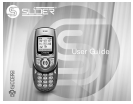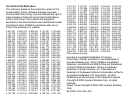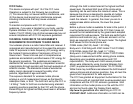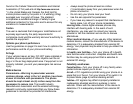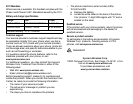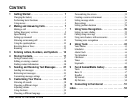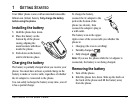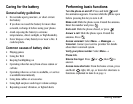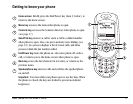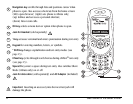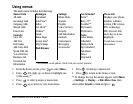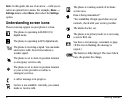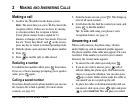found on the Cellular Telecommunications and Internet
Association (CTIA) web-site at http://www.wow-com.com.
* In the United States and Canada, the SAR limit for
mobile phones used by the public is 1.6 watts/kg (W/kg)
averaged over one gram of tissue. The standard
incorporates a substantial margin of safety to give
additional protection for the public and to account for any
variations in measurements.
Caution
The user is cautioned that changes or modifications not
expressly approved by the party responsible for
compliance could void the warranty and user’s authority to
operate the equipment.
Optimize your phone’s performance
Use the guidelines on page 2 to learn how to optimize the
performance and life of your phone and battery.
Air bags
If your vehicle has an air bag, DO NOT place installed or
portable phone equipment or other objects over the air
bag or in the air bag deployment area. If equipment is not
properly installed, you and your passengers risk serious
injury.
Medical devices
Pacemakers—Warning to pacemaker wearers:
wireless phones, when in the ‘on’ position, have been
shown to interfere with pacemakers. The phone
should be kept at least six (6) inches away from the
pacemaker to reduce risk. The Health Industry
Manufacturers Association and the wireles technology
research community recommend that you follow these
guidelines to minimize the potential for interference.
• Always keep the phone at least six inches
(15 centimeters) away from your pacemaker when the
phone is turned on.
• Do not carry your phone near your heart.
• Use the ear opposite the pacemaker.
• If you have any reason to suspect that interference is
taking place, turn off your phone immediately.
Hearing aids—Some digital wireless phones may
interfere with hearing aids. In the event of such
interference, you may want to consult your service
provider or call the customer service line to discuss
alternatives.
Other medical devices—If you use any other personal
medical device, consult the manufacturer of the device to
determine if it is adequately shielded from external RF
energy. Your physician may be able to help you obtain this
information.
In health care facilities—Turn your phone off in health
care facilities when instructed. Hospitals and health care
facilities may be using equipment that is sensitive to
external RF energy.
Potentially unsafe areas
Posted facilities—Turn your phone off in any facility when
posted notices require you to do so.
Aircraft—FCC regulations prohibit using your phone on a
plane that is in the air. Turn your phone off or switch it to
Airplane Mode (page 9) before boarding aircraft.
Vehicles—RF signals may affect improperly installed or
inadequately shielded electronic systems in motor
vehicles. Check with the manufacturer of the device to
determine if it is adequately shielded from external RF
energy.



